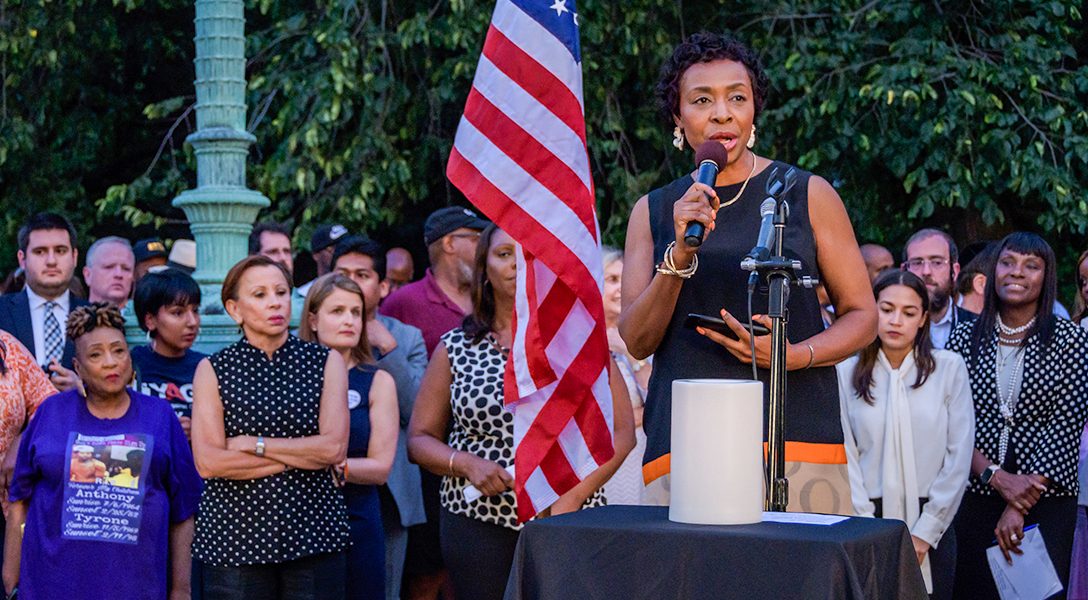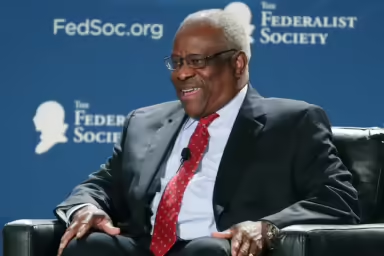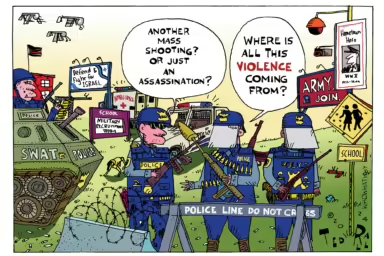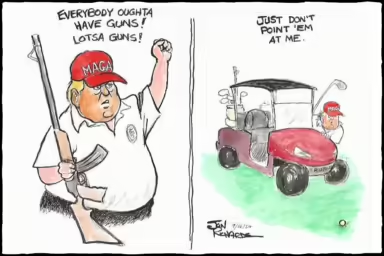The largest mass shooting in New York City in more than five years was largely ignored because it involved people of color -- reflecting a wider, ongoing trend.
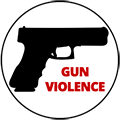
The largest mass shooting in New York City in more than five years took place a week ahead of the El Paso and Dayton massacres — yet few outside of the five boroughs talked about it at the time… or even knew it happened.
But it did. Twelve people were shot on July 27 at a block party in the Brownsville section of Brooklyn.
Brownsville would be followed by Gilroy, CA, on July 28; El Paso, TX, on August 3; and Dayton, OH, on August 4. Then came another mass shooting on August 5 — also in Brooklyn, at a community vigil in the Crown Heights neighborhood.
What happened in Brownsville — and Crown Heights — this summer is emblematic of issues that have been taking place for decades: Gun violence in poor, primarily urban, communities of color is ubiquitous and chronic — yet simultaneously ignored. Or when it is acknowledged, it’s often done cynically: Don’t talk to us about the NRA and gun control until you clean up that mess (of black violence) that’s going on in Chicago!
When Americans distinguish between “white” mass shootings, and violence directed at people of color in poor neighborhoods, policymakers and the media ignore achievable steps that could make the entire country safer. While the US is politically deadlocked over measures to limit the number of guns and to ban high-power weapons, there are proven solutions to the problem of urban violence. But those solutions do not get the attention — or the resources — needed to solve that piece of the problem.
The two Brooklyn incidents not only failed to make the national radar, but local activists, politicians, and community groups in New York had to wrestle with their city’s ultra-progressive mayor Bill de Blasio (D) to have him even acknowledge what happened in Brownsville as a mass shooting. When asked about it, the mayor said “that phrase is usually reserved for a different type of situation.”
The mayor was referring to gang-related shootings, which is what the police suspected the Brownsville and Crown Heights were. Most victims of mass shootings are black, and are gang-related, according to a New York Times–Reddit analysis. But, as the authors noted:
Few of the incidents resembled the kinds of planned massacres in schools, churches and movie theaters that have attracted intense media and political attention. Instead, the analysis, defined purely by the number of victims injured, revealed that many were part of the broader burden of everyday gun violence on economically struggling neighborhoods.
Individual shootings that are gang-related — or even seem gang-related — fail to receive the intense media and political attention that other mass shootings receive. For example, shootings in Chicago — “America’s mass shooting capital” — are not remembered alongside the Columbine, Sandy Hook, Gilroy, El Paso, and Dayton shootings, and all the others that seemed to have come out of nowhere — unlike gang-related shootings that seem to occur every day and surprise no one.
While the FBI defines the term “mass killing” as “three or more people [killed],” sites like the Gun Violence Archive and the Mass Shooting Tracker, according to the latter, define “a mass shooting” as “an incident where four or more people are shot in a single shooting spree. This may include the gunman himself, or police shootings of civilians around the gunman.”
It’s an important distinction. According to the Gun Violence Archive:
The current FBI definition of mass murder, commonly accepted by the media as a proxy for “mass gun violence,” is three or more people murdered in one event. We believe this does not capture the whole picture. Many people may survive a shooting based on luck alone. Some may be left with life long [sic] disabilities and trauma, but the mainstream definition of mass gun violence does not account for this … we count the number of people shot rather than the number of people killed because, “shooting” means “people shot.”
With 12 people gunned down, one of whom died, the Brownsville mass-shooting toll tripled the Mass Shooting Tracker’s definitional baseline. And with four shot, the Crown Heights shooting also qualified.
Two days after that July 27 shooting, an ad hoc assembly of elected officials and anti-gun activists — many sporting “Brownsville Rapid-Response” T-shirts — marched through the streets of that neighborhood in protest: The Gilroy, CA, shooting was immediately labeled a mass shooting — yet Brownsville still wasn’t being recognized as such.
Later, de Blasio walked back his comment attributing the shooting to gangs — and he pledged $9 million in Brownsville community funding, in direct response to the shooting. He conceded, “I’ve also come to realize it’s critical we call this what it was: a mass shooting.”
‘They’re Not Hurting White People’
The pattern of violence in these communities is different from mass shootings that grab the headlines, notes David M. Kennedy, a professor of criminal justice at John Jay College of Criminal Justice in New York City.
“It is committed with perfectly ordinary firearms,” he told WhoWhatWhy. “These are usually handguns. They’re not exotic military-style weapons.”
“Just to be explicit about it, they’re not hurting white people,” said Kennedy, who is also the director of the National Network for Safe Communities at John Jay College. “Hurting a whole bunch of white people at one point in ways that the country is not used to creates headlines. And it brings with it public and media and political attention.”
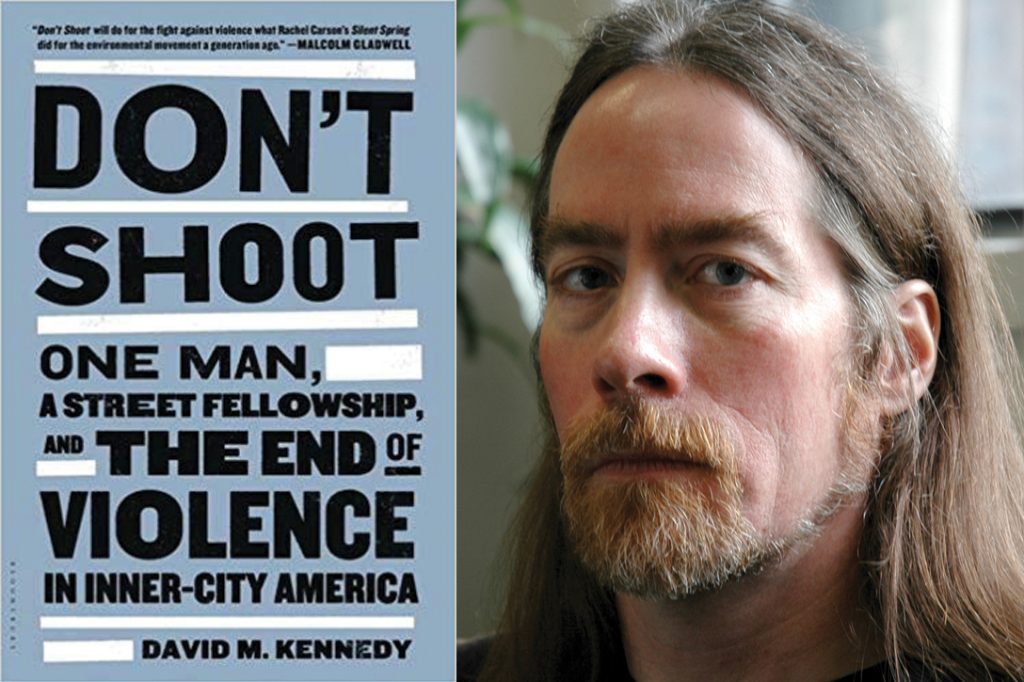
The lack of acknowledgment and compassion when it comes to gun violence — of any kind — in poor black and brown communities is glaring. A November 3, 2019, CNN article titled “Black kids go missing at a higher rate than white kids. Here’s why we don’t hear about them” demonstrates a similar level of neglect in yet another area of black life — where the lack of resources and attention can have life-or-death consequences.
“A shooting is a shooting. It has the same impact… and has really no color line,” says A.T. Mitchell, founder and executive director of Man Up! Inc. The Brownsville community organization leader continues, “Gun violence doesn’t have a particular set of, shall I say… ethics. It wreaks havoc anywhere it goes. It tears through the fabric of any community.”
Mass Shooting: Why Its Definition Matters
At the end of the day, like many problems in the US, gun violence in America, and its impact, boils down to money.
“The lack of attention by both media outlets and the government translates into fewer resources being invested in that community — whether it is funding for education, workforce development opportunities, or other programs that could make a real difference,” Jonah Allon, communications director at Brooklyn Borough Hall, and a spokesperson for Brooklyn Borough President Eric Adams,” told WhoWhatWhy. “That is problematic.”
In addition, as seen in the New York Police Department’s reaction to the Brownsville shooting, there is a reflexive leap to associate any type of gun violence in poor communities of color with gang violence.
While gang violence may sometimes play a role in urban mass shootings, there are two problems with this assumption: 1) Gang involvement — even when uncorroborated — often becomes the law-enforcement, political, and media default to explain gun violence in poor communities of color; and 2) It generates an excuse (in shootings of four or more people) to diminish or dismiss the fact that the shooting is — first and foremost — a mass shooting.
“Statistics have shown that most of the gun violence that does wreak havoc [in communities of color is] not, in fact, gang-related,” says Mitchell. “They’re more interpersonal-related. And it just so happens, in some cases, for it to involve a person who may be part of a particular gang or a group. However, every situation and every community is different.”
Kennedy helped develop and pioneer the “Operation Ceasefire” homicide-prevention strategy, which addresses community violence. He chafes at the term “gang.” He finds it not only outmoded, but “not helpful.” Whatever you label them, Kennedy said, what “is true is that high-risk groups are at the heart of community violence.”
Central to his book, Don’t Shoot: One Man, a Street Fellowship, and the End of Violence in Inner-City America, is that a very small percentage of people/groups is responsible for community violence in most urban areas.
Pastor McBride, a Bay Area pastor and director of a community campaign spearheaded by faith leaders that aims to stem urban violence and mass incarceration, agrees.
“Not enough people know that less than half of one percent of [a] city’s population drive as much as 60 percent of the violence,” McBride told WhoWhatWhy.
Focusing funding resources and initiatives on those populations, in particular, yields a tremendous return on anti-violence investments, and, according to the Giffords Law Center, has yielded a sharp reduction in gun violence in many cities. However, the long, complicated history between communities of color and the police — which includes excessive force and high-profile police violence — can seriously compromise such efforts.
Mass Murder in Slow Motion Every Day
Kennedy notes that in some communities this has “pretty much tanked [the] legitimacy of police and prosecutors.” The fallout, he says, is, “the way in which not being willing to call the police for help leaves people on their own and drives them to produce their own public safety for themselves — which can end up being gun violence.”
What frequently gets lost in the discourse around urban gun violence is the human side of things. Summarizing his own analysis and experiences as well as those of many of his anti-violence colleagues, Kennedy says, “The concentration of violence among people at high risk is a product of history, and trauma, and abuse, and neglect, and racism, and objective fear.”
When examining large-scale shootings in general, even the term “mass shooting” comes into question. In an article in the New York Times on the invisibility of mass shootings in African American comunities, Ali-Rashid Abdullah of the Cincinnati Human Relations Commission calls these high-volume killings “mass murder occurring in slow motion every day.”
In response to this characterization, Mitchell cited a statistic that most anti-gun-violence advocates know by heart: “The number one cause of death for African-American and Latino boys, in particular — ages 16–24 — is gun violence.” Kennedy adds, “Black men are about 6 percent of the country’s population, and they’re 40–50 percent of American homicide victims.”
When it comes to mass shootings in communities like Brownsville, Mitchell and other activists can tell you that there’s the official Mass Shooting Tracker definition, and then there’s the reality on the ground.
“Massive shootings … have occurred, maybe not all at one time, but over a period of time,” says Mitchell. “Which is why we like to think of our shootings as mass shootings as well.”
There have been 388 mass shootings (4 or more people shot) in the U.S. so far in 2019, including at least 132 involving domestic violence and/or juvenile victims.https://t.co/gNPTI2UbiX pic.twitter.com/NssGnQ4zMi
— MassShootingTracker (@massshootingtrk) October 7, 2019
However, recent history has shown that, according to Mitchell, “a certain amount of resources” comes with incidents that align with the Mass Shooting Tracker definition of a mass shooting.
Logically, he argues, since “communities of color have been experiencing massive shootings on an ongoing basis throughout the year, we should also be receiving massive resources to pour into those communities, to help us turn the tide of the violence.”
Anti-gun-violence advocates compare the disconnect between the Mass Shooting Tracker definition and the body count in inner-city killings to the disparities in the way crack and powder cocaine were legally treated and prosecuted from the 1980s onward.
The penalties for possession and use of crack (predominant in the inner city) were far more severe than for powder cocaine (predominant in white neighborhoods). In what way, advocates ask, is fatal shooting of four people on the same day in Gilroy, CA, different from the fatal shooting of four people on four consecutive days in Brooklyn?
This is why Mitchell and others got ahead of the curve by immediately labeling the event in Brownsville where 12 were gunned down a “mass shooting.”
“It’s just the way that people like to word it differently,” he said. “We’re not using the same buzz words — you know, key words that need to be used in order for us to qualify and receive an abundance of resources that come with a shooting being labeled a mass shooting.”
Mitchell and others advocating for Brownsville did everything “right” instantly — talking the talk and using “official” phrasing — yet they still had to lobby for several days to get a designation that Gilroy, following on the heels of Brownsville, got immediately.
While “violence is hugely disproportionately victimizing people of color,” Kennedy says, those shootings are “often overshadowed politically and publicly by the attention given to what I’ll call spree shootings.”
He asserts that a spree shooting “encompasses an awful lot of what people don’t think of as spree shootings.” He adds, “They don’t look like Parkland, they don’t look like Pulse, they don’t look like Las Vegas, or Dayton, or El Paso.” What occured in Brownsville is an example of what people don’t think of when they think of a spree shooting.

The other incidents he’s referring to are driven by group (i.e., “gang”) and drug-related violence. He also points to rampant domestic violence (which McBride also emphasizes as something that flies under the radar in the national dialogue on gun violence) in which multiple people are shot. Using the term “mass shooting” (and its Mass Shooting Tracker definition) for such incidents, Kennedy feels, doesn’t “fit the reality on the ground.”
In contrast — one of his core points — when numerous people get shot at a suburban high school, it automatically becomes front-page, national news and garners resources, while the many “Brownsvilles” across the country are ignored because they don’t match “what people think of as mass shootings.” He continues:
And what all that adds up to, frankly, is [that] the relatively rare events that hurt a lot of mostly white folks get all the attention. And the day-to-day violence that overwhelmingly affects black and brown communities just doesn’t.
The Bottom Line
Financial assistance for communities that suffer is a mass shooting comes from a general fund for victims of crime underwritten by federal grants emanating from the Victims of Crime Act (VOCA). That federal government money is then distributed through local and state programs to assist crime victims. An article titled “Mass-Murder Compensation Compliments of Uncle Sam” sums the system up:
I found that the DOJ has an Office for Victims of Crime (OVC), and within that is the Crime Victims Fund (CVF), which is largely funded by criminal fines, penalties, special forfeitures and special assessments, not taxpayers. Then there is an ancillary program called the Antiterrorism and Emergency Assistance Program. AEAP has $50 million at its disposal every year to distribute specifically to victims of terrorism and mass violence. The money can go to help survivors with medical bills and lost wages, and help law enforcement costs associated with the crime. And some funds have gone to reimburse hospitals for their extraordinary care during a mass violence crisis. AEAP is funding the Las Vegas payout via grants to local and state crime-victim assistance programs in Nevada.
Mitchell, Kennedy, and McBride, who enter the anti-gun-violence trenches daily, all agreed that there is no funding source specifically allocated for victims of mass shootings. However, McBride notes, “I’m not aware of any dollars set aside for the prevention of mass shootings — although one could argue that there’s a blank check for the response to mass shootings. And that is our tax base, right?
“Our tax dollars can very quickly be leveraged to hire more cops, put cops in schools, to arm teachers, to fight against the passing of common-sense gun-safety laws,” he added. “And, so, I think the aftermath of mass shootings definitely has a blank check that is largely driven by fear and the kind of lobbying infrastructure of this country.”
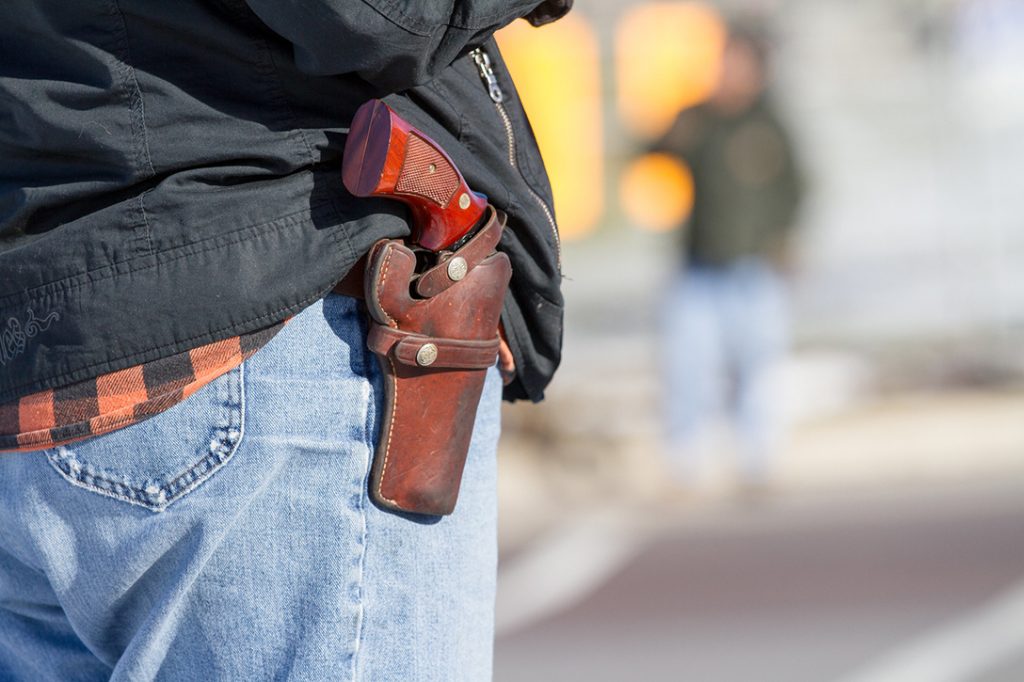
“There is no requirement that an incident [be] deemed a ‘mass shooting’ for [our] agency to assist its victims,” said Janine Kava, Director of Public Information, New York State Division of Criminal Justice Services. Her office is part of the New York State Office of Victim Services (OVS). She also confirmed that her office offers the type of financial and resource assistance mentioned in the “Mass-Murder Compensation…” article.
Kava also clarified that OVS is the payer of last resort. This means that all other sources of assistance, such as medical or automobile insurance and workers’ compensation, must be exhausted before the agency can reimburse victims or their family members for out-of-pocket losses resulting from a crime. So, assistance provided is more reimbursement than compensation — which makes putting out money up front difficult for struggling, low-income crime victims.
As is typically the case in the US, rules governing how federal grants for victims’ compensation are administered differ from state to state. Kava pointed out some distinguishing features in New York’s compensation structure that are more favorable to victims, compared to other states. New York is the only state in the country that doesn’t have a cap on counseling or medical expenses. This means that crime victims and their family members can receive help for as long as necessary. However, reimbursement for other expenses is capped, by law, including for loss of support [which can result from the death of a victim or any crime-related injury that renders an individual unable to work].
That’s the “compensation” side. On the assistance side, Kava’s office also gives funding to over 200 victim assistance programs statewide, which provide direct services including counseling, advocacy, and legal services. There are also advocates working for those programs who assist people in filing claims for agency assistance.
McBride is an advocate for an approach to social issues (such as gun violence) articulated by Professor John A. Powell under the rubric “targeted universalism.” (Powell teaches law, African American studies, and ethnic studies at the University of California, Berkeley, and is director of its Haas Institute for a Fair and Inclusive Society.) According to McBride, the main dictum of Powell’s theory is that universal strategies do not create universal outcomes.
The universal outcome in this case, McBride says, “is the ending of mass shootings and any act of gun violence.” But to get there, he says, requires “not privileging gun-policy solutions over and against, say, intervention strategies, or public health strategies.”
He uses the following analogy to explain Powell’s theory: “Let’s say a universal outcome is to get to the top floor of a building. And we’re all on the ground floor. If you are handicapped, you can’t use a universal strategy of a stairwell.” For some, he says, it may be using the elevator, or for another scaling the outside of the building. But their common goal remains making it to the top floor. Basically: Same destination, different methodologies.
This aptly describes what activists of color have experienced when it comes to urban gun violence. They share the common goal with their white peers of eradicating gun violence. But unlike the way that many in America have thrown up their hands in despair over mass shootings, the stranglehold of the NRA, and partisan gridlock that won’t allow for major federal gun reform, urban communities have an edge: They have proven methods for effectively combating their specific strain of gun violence.

“We know that the best way to address chronic gang violence is by treating it as a public health crisis,” said Allon, of the office of Brooklyn Borough President Eric Adams. “The Cure Violence method, which deploys credible messengers to be violence interrupters, has proven to be effective in de-escalating conflicts before they turn violent, and turning people away from gang violence.”
Mitchell’s organization, Man Up! Inc., also uses this model, and he and several other well-known anti-gun-violence advocates created a “crisis management” system to complement that system with the wraparound services other city agencies offer. He elaborates that they are targeting these resources to the highest-risk, most vulnerable members of the community. This includes those involved in gun violence, in gangs, recently released from prison, or who are underemployed or unemployed. Said Mitchell, “We target that population, specifically, and we prioritize them, and we pour resources in their direction, which ultimately gives us … an inroad with that population [and] a relationship.” The payoff, he says, is “that before they resort to gun violence, they have a relationship with us that they trust, and they allow us to help mediate the conflict before it gets to that sort of turnout.”
That said, while Mitchell praises de Blasio as the mayor who “has done more than any other mayor in the history of New York City addressing the issue of gun violence,” he argues that the $9 million made available was not enough of an investment in a community like Brownsville. This is because, he says, more New York taxpayer dollars are spent “to incarcerate, to arrest, to hospitalize people of Brownsville than … even if you look at it from the math of $9 million … what it would cost for us to try to put something together to get in front of it.”
McBride agrees, citing that such strategies — which can home in on the under 1 percent of a city’s population causing most of the violence — “can reduce shootings in communities by 20, 30, 40 percent within 18 months of its implementation” and “help remove the collective-punishment approach to black communities” and even make the atmosphere for policing and officers safer.
So, if there are no official funds or benefits allocated for mass shootings, but, rather, de facto ones, why is it beneficial — and even urgent to some — to label incidents like Brownsville a mass shooting?
“Mass shootings in which large numbers of mostly white people are killed is mobilizing funding [and] attention at the local, state, and federal level,” Kennedy, the professor at John Jay College said. “Ideas about new public policy. Ideas about new legislation. It’s certainly moving public-private money into those communities.”

He gives the example of the Parkland, FL, massacre, where, “within a couple of weeks, the state legislature had found almost $100 million for school security. And those sorts of moves are simply not being made with respect to the grinding, awful urban violence that goes on day after day.”
And more than a year after the October 1, 2017, mass shooting in Las Vegas, the Department of Justice awarded more than $8 million to support California survivors.
Kennedy notes, “we know infinitely more about how to stop community violence than we do about how to stop spree shootings. And spree shootings are getting all the attention. The community violence is not.”
California has provided the counterweight to this. According to a Board of State and Community Corrections California release on its website, for 2018–2020, California Governor Gavin Newsom (D) approved $30 million for a statewide grant program called California Violence Intervention and Prevention (CalVIP). Its goal is violence reduction by supporting local organizations that provide educational activities, job training, mentoring, and therapy for young African Americans who have experienced violence. According to the site, this was a landmark, record funding amount — up from $9 million.
Given this history of non-responsiveness to gun violence in communities of color, Assemblywoman Latrice M. Walker — who counts Brownsville among the communities she represents — was among those who sprang to action after the July 27 shooting.
In the wake of the Brownsville mass shooting, Walker called on de Blasio and New York Gov. Andrew Cuomo (D) to declare the Brownsville incident a mass shooting.
“The intention of this designation was to trigger access and to fast-track resources for vital programs which would include emergency relief, crisis response efforts, training, and technical assistance for the benefit of the victims and communities affected by mass violence,” she said.
“Unfortunately, in communities of color, resources and restoration are never allocated because these acts are viewed as commonplace,” Walker added, “My main concern was that the victims, their families, and the affected communities would not receive the timely support and access to vital city, state and federal resources without this mass-shooting designation … This incident cannot merely be categorized as an incident of ‘random gun violence.’”
To make sure this didn’t happen again, she worked with her colleagues — New York City Councilwoman Alicka Ampry-Samuel and US Congresswoman Yvette D. Clarke — to successfully secure city, state, and federal funding to allocate to organizations serving Brownsville. Services will include, but not be limited to, “mental health/trauma informed care; medical expenses; rehabilitative expenses; child care and dependent care; lost wages; and support of victim participation in criminal justice proceedings[; as well as] healthcare and professional personnel … to address the devastation.”
In addition, several organizations will also share $4.3 million in federal funding allocated by the state to provide mental health services for victims of crime and their families in Central Brooklyn; that funding is part of $11 million in federal funding the state awarded to 11 different organizations and agencies throughout Brooklyn, including six located in Brownsville.
In general, Mitchell wants to see increased funding not only from the government, but the private and corporate sectors as well. Otherwise, he says, organizations like his “will always still remain vulnerable, because it’s really difficult to just do it by taxpayer dollars.” McBride co-signs with Mitchell and has on his bucket list the Department of Justice and/or the Health and Human Services putting “at least $500–800 million allocation for urban-gun-violence-type interventions, public health-type interventions, [and making] those available to the cities in our country that have the highest proportion of gun-related shootings and homicides.” He also wants to see technical assistance and infrastructure provided by the government, since many local cities “don’t have the kind of experience around the strategies themselves to actually scale them and implement them effectively.”
McBride notes that even broad swaths of law enforcement are endorsing such strategies, recalling, humorously, “I think when we first started doing this work, they were still calling these … hug-a-thug strategies. That party line doesn’t seem to exist very much anymore.”
Asked to describe his neighborhood, Mitchell does so ardently:
The Brownsville that I know, first and foremost, is actually a very beautiful, loving community. A people who have been far too ignored and underestimated … so we endure a lot of the pain that comes with poverty and unemployment… It says a lot about a neighborhood that has endured a lot, yet can still stand on its feet — and stand proud and tall. And that’s the Brownsville that I know, that I love, that I grew up in, that I work in today, and that I advocate for … We don’t want to be depicted as a neighborhood that’s only talked about when it relates to gun violence.
Brownsville, and other neighborhoods like it, asking that their mass shootings be recognized as mass shootings and that their daily “slow-motion” ones be acknowledged as well — is, in part, about parity and equity: If the Mass Shooting Tracker has a standard definition, then apply it, on a level playing field, to all.
But it’s also about power and resources. Unlike America’s annual, decades-long national mud fight between anti-gun-violence activists and the NRA, urban gun violence is a problem this country can actually solve. It’s been extensively, and formally, studied by academicians and government agencies (including by David Kennedy’s, National Network for Safe Communities at John Jay College), with social proof in the form of activist success on the ground. That’s why putting funding behind such proven methods has such urgency, as if to say: America, we can do this!
Given the final say, Pastor McBride is confident and hopeful:
I think that the tide is changing, if not already changed. I think that what we need to do now is sharpen our collective messaging, align our collective strategies, build a new political coalition of law enforcement, public health, faith leaders, young people, and then have political champions that are willing to believe in the power of our coalition in the way Republicans believe in the power of the NRA. And I think we’re close — I think we’re closer than we’ve ever been, and we’re going to keep pushing till we break through.
Related front page panorama photo credit: Adapted by WhoWhatWhy from Mark Coplan’s Berkeley Public School Photos / Flickr (CC BY-NC-SA 2.0).
